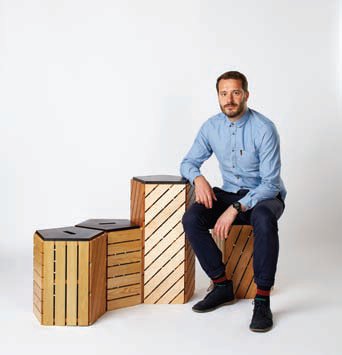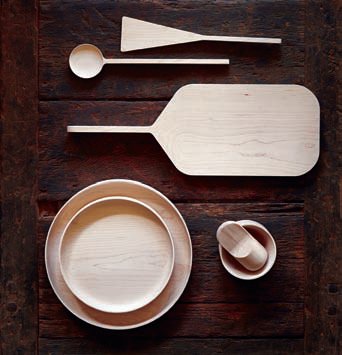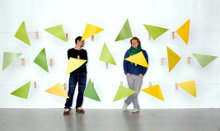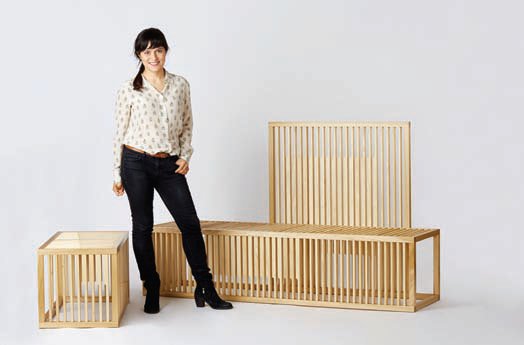Five designs on diversity
16 June 2014A London design exhibition underlined the untapped manufacturing and creative strengths of under-exploited US hardwoods. Mike Jeffree reports.
The American Hardwood Export Council challenged five young designers and design teams to demonstrate the aesthetic and performance potential of five species it feels are under-exploited by the creative community and manufacturers. It wasn't disappointed.
The end results, featured in an exhibition called simply Five as part of May's Clerkenwell Design Week in London, highlight that these lesser-used varieties offer huge untapped possibilities for interior and household items.
AHEC threw down its gauntlet to the members of the OKAY Studio design collective in February. They could create furniture, sculpture or tableware, but had to use US tulipwood, hard maple, red oak, ash or cherry, with the end result making the most of the timber's looks, texture, colour and technical/making potential.
"Given current furniture fashion you may be forgiven for thinking our forests are all about white oak and walnut, but walnut is less than 1% of standing hardwood trees in the forests, and white oak is not even the most abundant oak," said AHEC European director David Venables. "The five species selected account for 50% of the resource and the project forms part of our efforts to establish a balance between market demand and the dynamic of the forest."
Also involved in the initiative was craftsman maker Adam Kershaw, who has worked with AHEC before, producing its Octopus display platform made in modified and natural tulipwood which featured at several exhibitions, including as the Wood Awards stand at Ecobuild in March. He made three of the five final creations.
"The timbers used have the potential to make a much greater contribution to 21st century product design and it's important that we share this knowledge with designers," he said.
The response to AHEC's challenge from designer duo Peter Marigold and Andrew Hawthornethwaite was a screen made from curved and cupped tulipwood. Each is mounted on tensile wire and held in place with a red oak counter balance. Their aim, they said, was to illustrate the versatility and capabilities of a lightweight species.
Another team, Amy Hunting and Oscar Narud, and individual designer Ed Swan, decided to make the most of the AHEC timber palette and use all five species.
The former created a series of occasional tables comprising cones turned to a 5mm point sitting in glass vessels.
Mr Swan made a range of stackable stools and occasional tables, featuring red oak frames and clad in strips of the other species to show how they work together.
Lilliana Ovalle designed matching benches in tulipwood battens, machined along their length in different thicknesses to emphasise not only the colour variation in the timber, but also its light weight and strength.
Taking a very different slant, Mathias Hahn created a range of hard maple kitchen utensils, making the most of the species' smooth grain and hard-wearing properties.
Mr Venables described the diverse application of the different timbers as "fresh and invigorating" and hoped the exercise would inspire the designers to use them more. And he insisted the products were far more than "creative flights of fancy".
"This was not an indulgent exercise for the designers," he said. "In working with Adam Kershaw they got to understand the practical, manufacturing properties of the timber.
They also learned about the nature of the US hardwood resource, issues of sustainability and availability and making the most of what the forest has to offer. And the profile this event achieved conveyed these messages to a wider audience."
AHEC added that the designers' work may get a further airing at the 100% Design show in London in September and some were considering entering their products for this year's Wood Awards.



